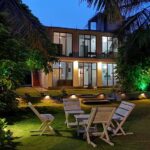NASA has a long history of supporting America’s business visionaries as they foster advancements from thoughts to business preparation. The organization’s Small Business Innovation Research (SBIR) program is facilitating that heritage with 140 new Phase II honors to 127 U.S. private ventures that will help them move their developments to showcase. NAASA New
The honors to these private ventures, situated across 34 states and Washington, D.C., complete $105 million. NASA’s independent venture program is devoted to tracking down the most helpful advances for the office and the business commercial center, and sourcing those developments from an assorted gathering of business people with various foundations and viewpoints. The organizations picked for Phase II subsidizing incorporate 33 ladies possessed, minority-claimed, and veteran-possessed independent ventures.
The awardees all got starting SBIR Phase I contracts in 2020 to exhibit the benefits of their advancements and show how they could add to NASA’s endeavors in human investigation, space innovation, science, and flight. The Phase II honors will furnish them each with up to $750,000 to propel their innovations toward expected commercialization. The organizations will go through as long as two years creating, illustrating, and conveying their proposed projects.
“These private companies got Phase I grants towards the beginning of the worldwide pandemic and persisted through it to advance promising best in class innovation arrangements,” said Jim Reuter, partner head for NASA’s Space Technology Mission Directorate (STMD). “As the public authority gets independent companies in the groove again, we esteem their responsibility and devotion to supporting NASA missions and objectives.”
InnoSys Inc., a lady possessed independent company in Salt Lake City, Utah, fostered an idea for a camera that can work in amazingly high temperatures – maybe even on Venus where surface temperature can arrive at 900 degrees Fahrenheit. Its advancement replaces glass envelopes in traditional imaging tubes with different materials, for example, quartz or sapphire, that can withstand cruel conditions. Past space mission applications, the organization needs to make cameras for imaging flames or high-temperature heaters very close, and for examining atomic reactor centers.
NASA plans to help private companies like InnoSys center around commercialization. The program offers extra financing openings for independent companies if their Phase II work demonstrates effective, assisting them with discovering clients outside the office.
“The Phase II agreement period is an energizing time, as independent ventures set up their thoughts as a regular occurrence and foster models appealing to NASA and private financial backers,” said NASA SBIR Program Executive Jason L. Kessler. “The chose innovations have shown extraordinary possible effects for their particular areas, and we are pleased to ceaselessly put resources into the present roaring aviation economy through these independent ventures.”
California-based Micro Cooling Concepts has worked with NASA’s SBIR and Small Business Technology Transfer (STTR) program since 2004 on different warm administration developments. This year, NASA chose the organization for a Phase II agreement to fabricate a lightweight, minimized warmth exchanger with conceivable electric airplane impetus applications. Utilizing the turn of events and exercises picked up during Phase I, Micro Cooling Concepts will propel its spotless energy innovation to conceivably uphold new airplane designs for NASA, the military, and the business area.
Tietronix Software Inc., a minority-possessed private venture in Houston, was chosen to develop a virtual clinical “master” that consolidates man-made consciousness and expanded reality. In working through its idea during Phase I, Tietronix Software perceived the need to flawlessly incorporate clinical assets, information, preparing, procedural direction, and indicative help. The framework could give space explorers clinical self-governance during expanded missions and advantage the military or different associations in places where clinical experts have restricted accessibility.
NASA recently reported $45 million in Phase I grants to another gathering of independent ventures in March 2021.
NASA’s SBIR/STTR program is essential for STMD and oversaw by NASA’s Ames Research Center in California’s Silicon Valley.










